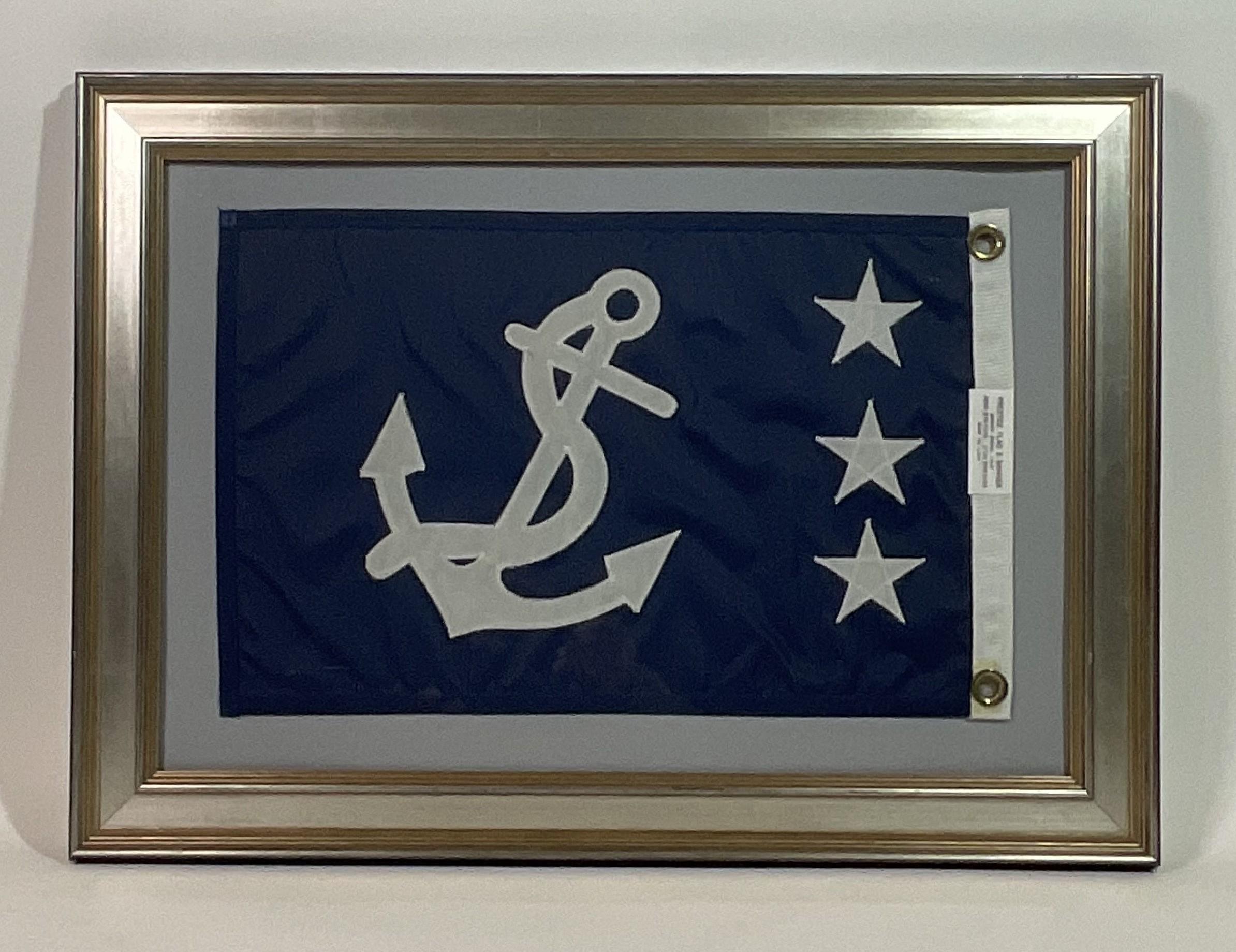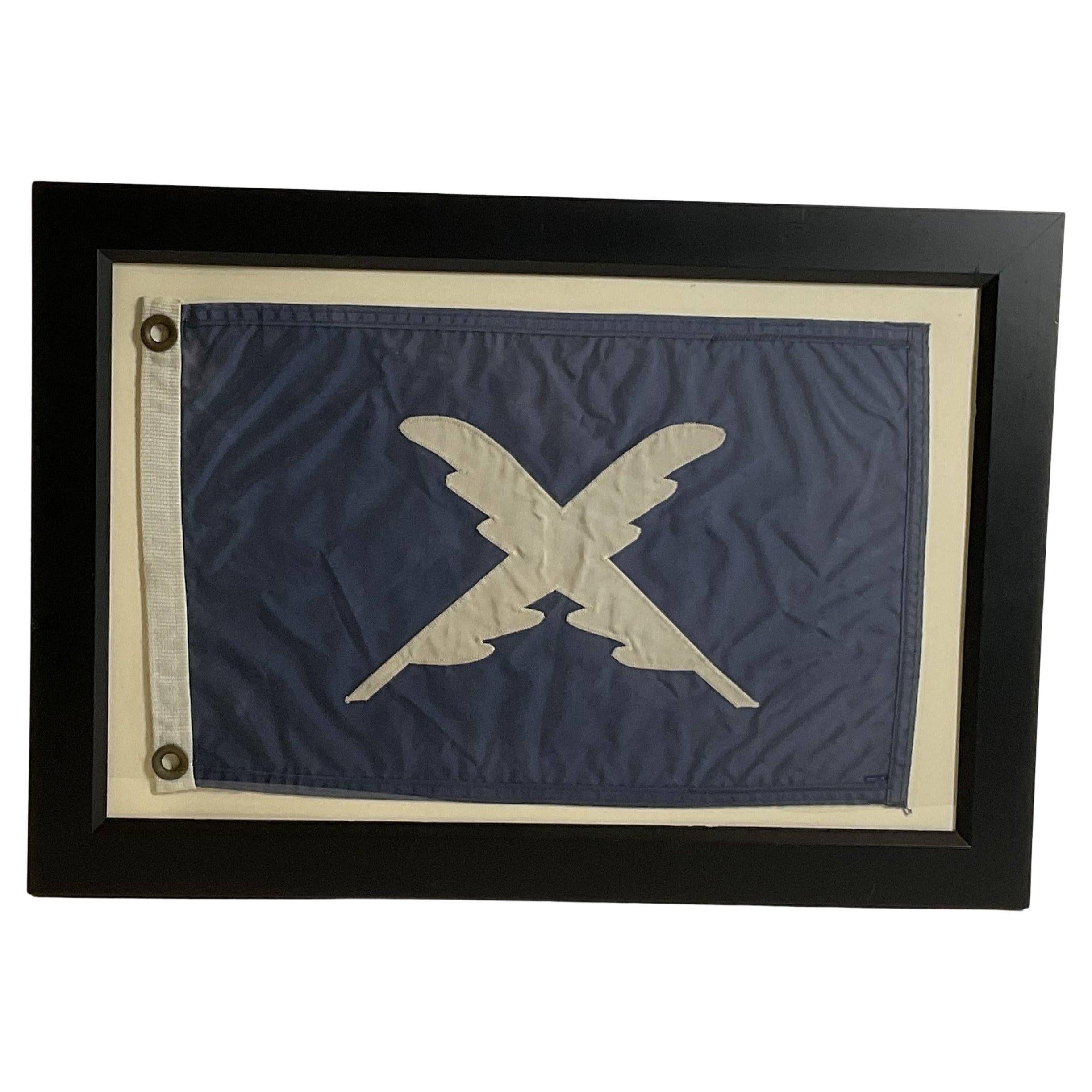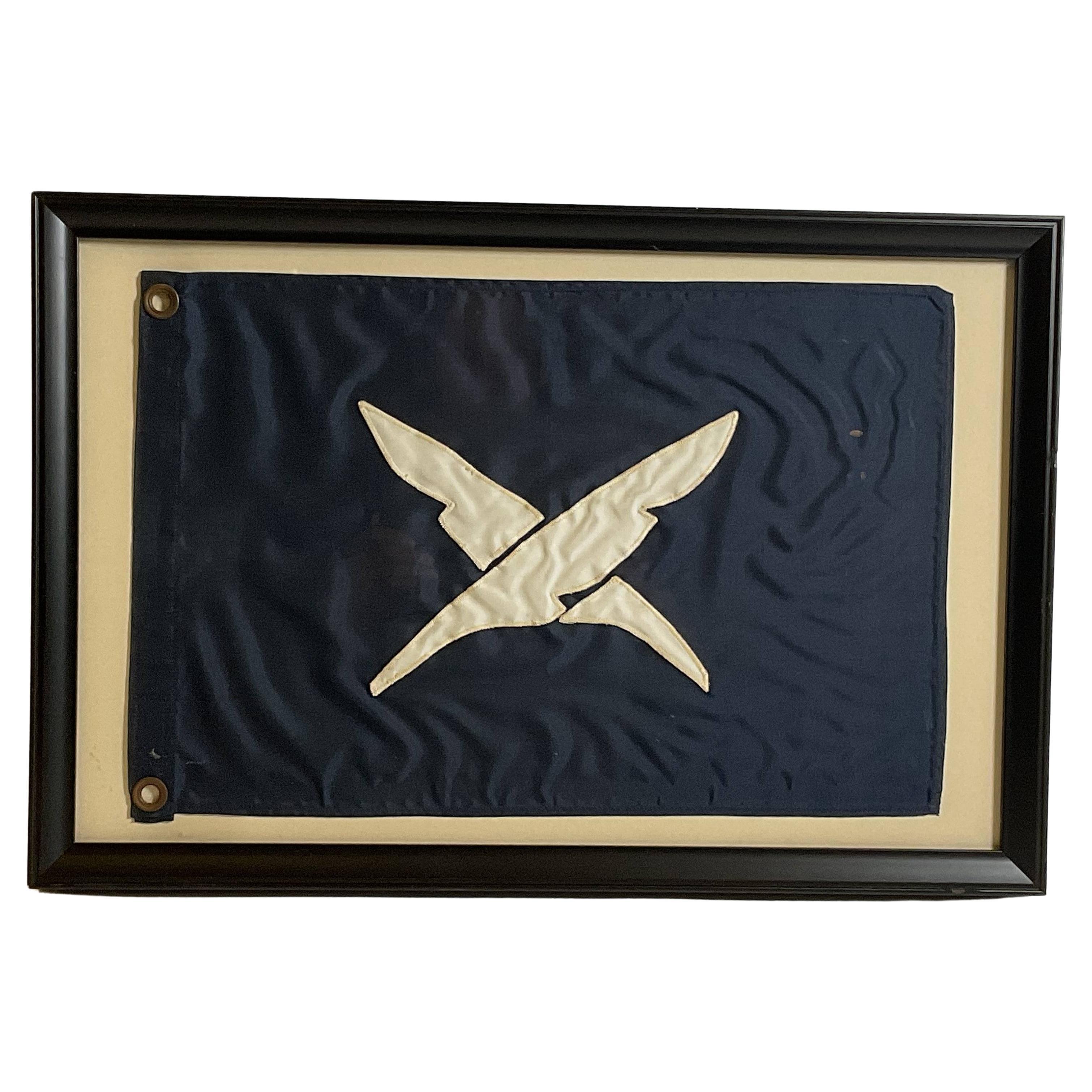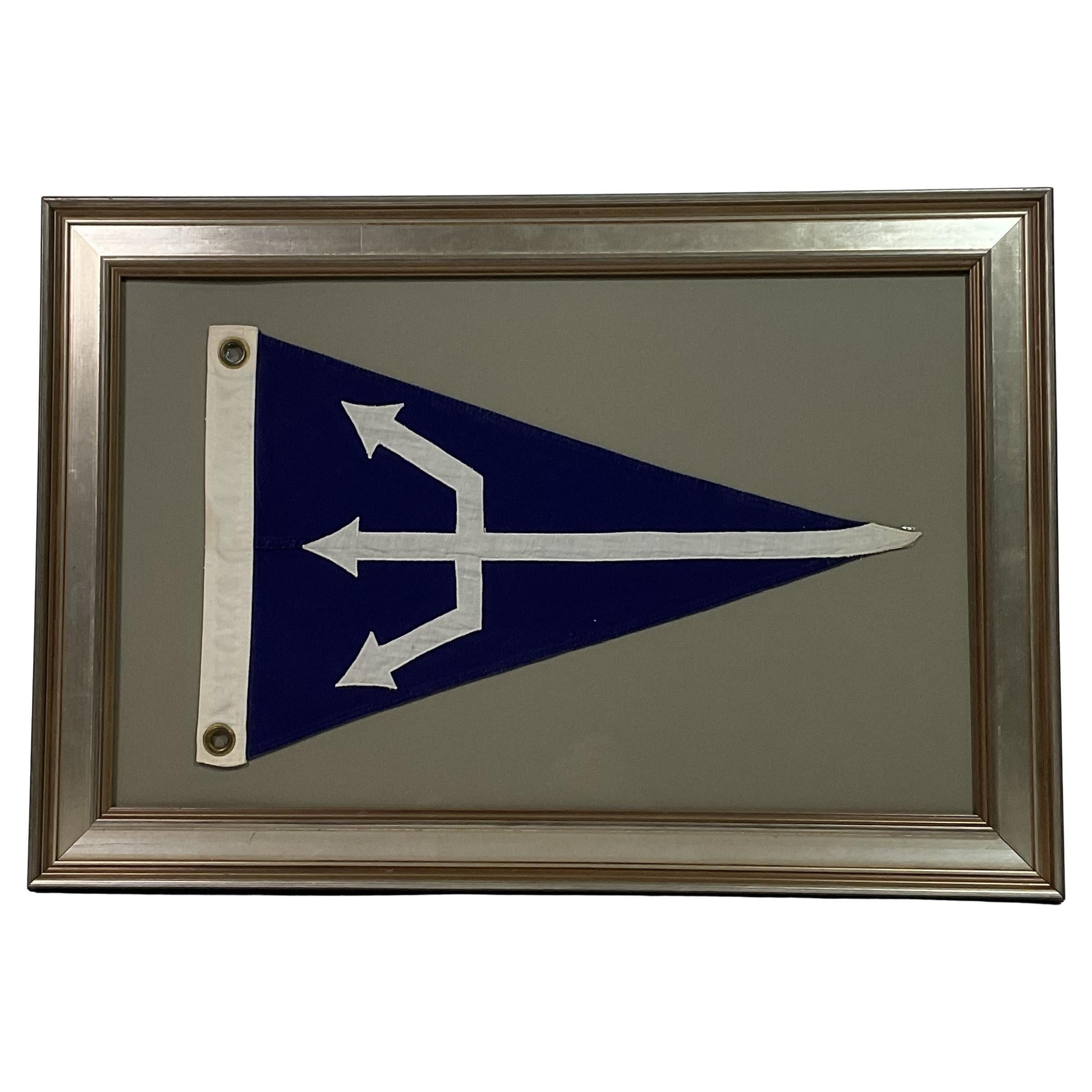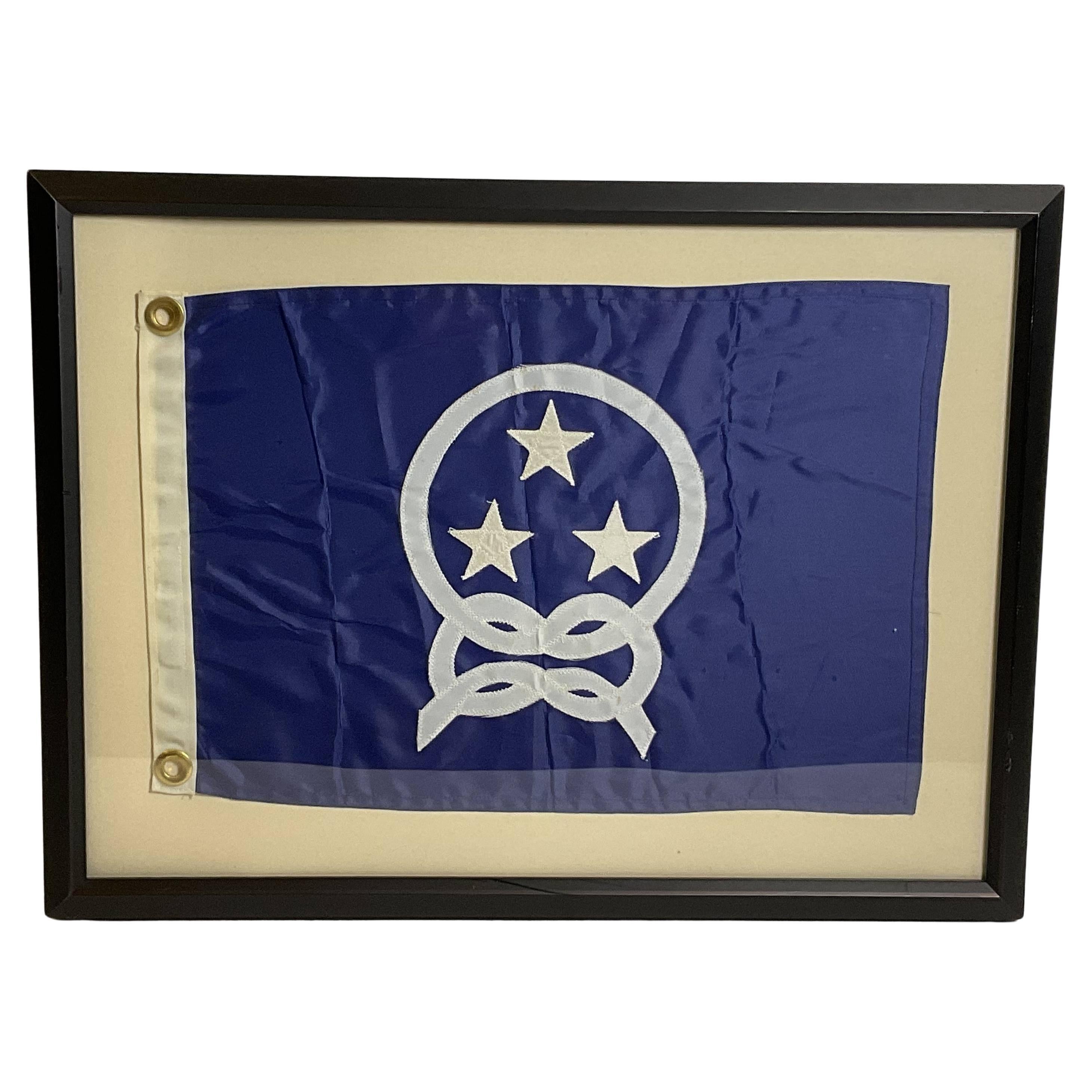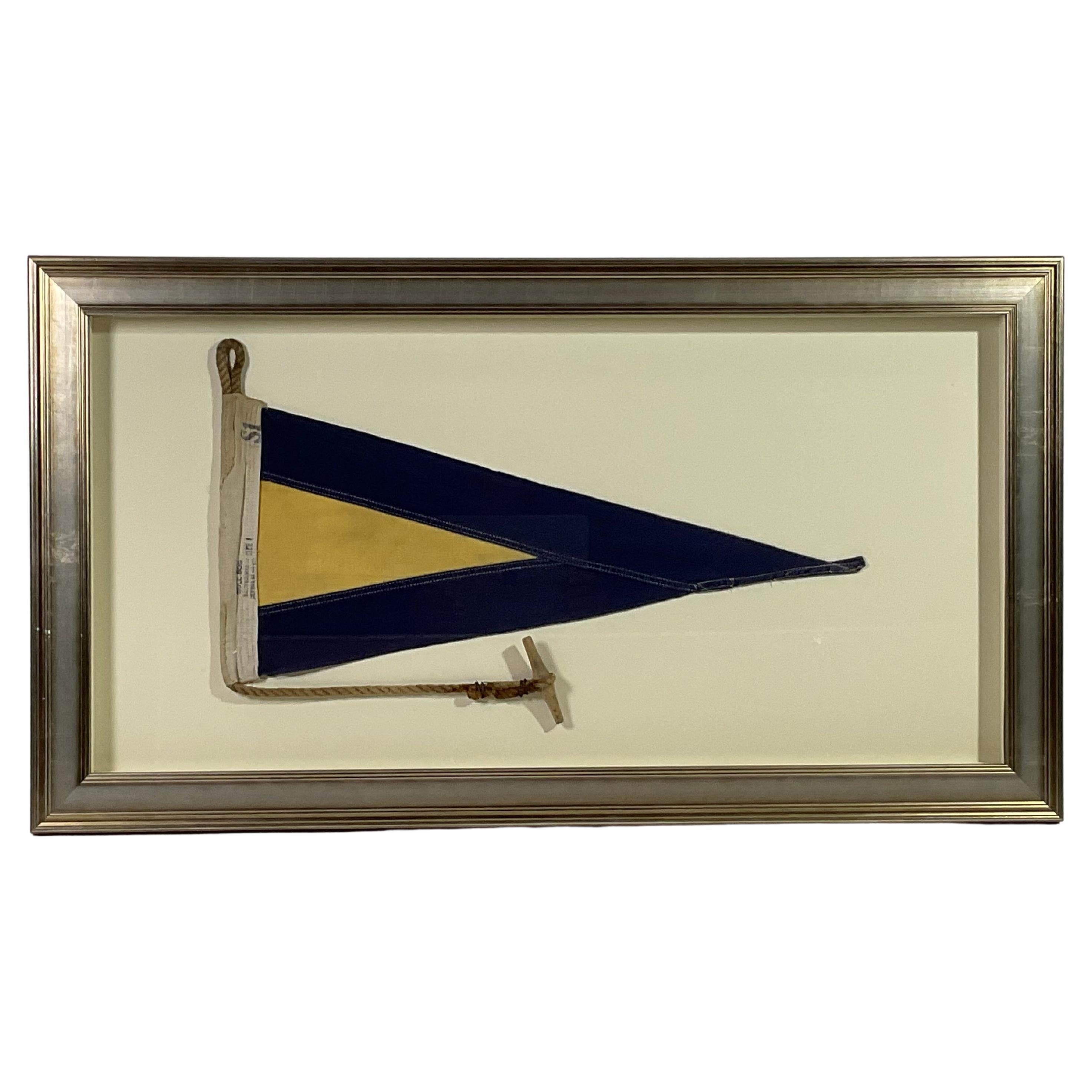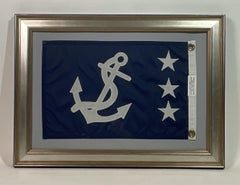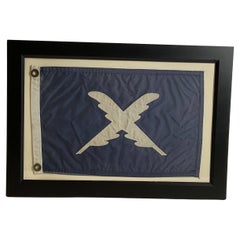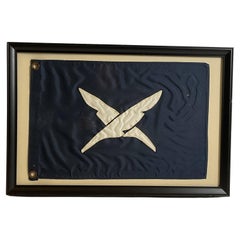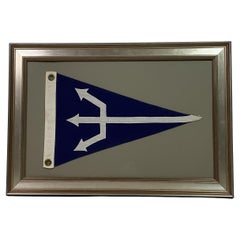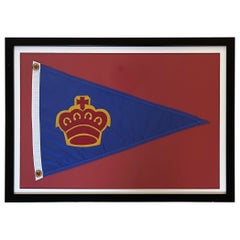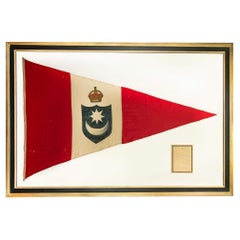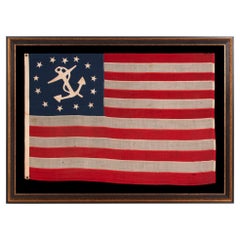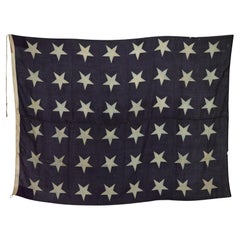Want more images or videos?
Request additional images or videos from the seller
1 of 9
Sylvester the Boat Flag
$295
£225.19
€258.87
CA$415.12
A$461.63
CHF 242.46
MX$5,643.87
NOK 3,021.25
SEK 2,848.22
DKK 1,932.02
About the Item
Nautical burgee flag showing Sylvester the cat. Swallowtail flag with a strong hoist and brass grommets. Custom frame.
Weight: 9 lbs.
Overall Dimensions: 22"H x 30"W
Made: America
Material: Cloth
Date:
- Dimensions:Height: 22 in (55.88 cm)Width: 30 in (76.2 cm)Depth: 1 in (2.54 cm)
- Materials and Techniques:
- Place of Origin:
- Period:
- Date of Manufacture:1950
- Condition:
- Seller Location:Norwell, MA
- Reference Number:Seller: 85781stDibs: LU1741238280182
About the Seller
5.0
Vetted Professional Seller
Every seller passes strict standards for authenticity and reliability
Established in 1967
1stDibs seller since 2015
415 sales on 1stDibs
Typical response time: 1 hour
- ShippingRetrieving quote...Shipping from: Norwell, MA
- Return Policy
Authenticity Guarantee
In the unlikely event there’s an issue with an item’s authenticity, contact us within 1 year for a full refund. DetailsMoney-Back Guarantee
If your item is not as described, is damaged in transit, or does not arrive, contact us within 7 days for a full refund. Details24-Hour Cancellation
You have a 24-hour grace period in which to reconsider your purchase, with no questions asked.Vetted Professional Sellers
Our world-class sellers must adhere to strict standards for service and quality, maintaining the integrity of our listings.Price-Match Guarantee
If you find that a seller listed the same item for a lower price elsewhere, we’ll match it.Trusted Global Delivery
Our best-in-class carrier network provides specialized shipping options worldwide, including custom delivery.More From This Seller
View AllFramed Nautical Yachting Flag
Located in Norwell, MA
Marine flag showing a fouled anchor with three stars, which signify that a past yacht club's commodore is on board. Blue field with white anchor and stars,...
Category
Vintage 1950s North American Nautical Objects
Materials
Cotton
Yacht Club Secretary Flag
Located in Norwell, MA
Nautical flag in frame with glass. Blue flag with crossed feathered quills. Blue field with white applied letters. White hoist with brass grommets.
Weight: 5 lbs.
Overall Dimensions...
Category
Vintage 1930s North American Nautical Objects
Materials
Linen
Yacht Club Secretary Flag
Located in Norwell, MA
Nautical flag in frame with glass. Blue flag with crossed feathered quills. Blue field with white applied letters. White hoist with brass grommets.
Weight: 4 lbs.
Overall Dimensions...
Category
Vintage 1930s North American Nautical Objects
Materials
Linen
Framed Nautical Flag with Poseidon's Trident
Located in Norwell, MA
Linen flag with a large white trident spear stitched onto a blue field, white hoist with brass grommets. Set into a frame with gray matting.
Weight: 6 lbs.
Overall Dimensions: ...
Category
Vintage 1980s North American Nautical Objects
Materials
Cotton
Yacht Club Commodores Flag
Located in Norwell, MA
Nautical boat flag in frame. Yacht Club Commodores flag showing three stars surrounded by a knotted rope. White hoist with brass grommets. Set into a custom frame.
Weight: 5 lbs
Ove...
Category
Vintage 1930s North American Nautical Objects
Materials
Linen
Vintage Nautical Signal Flag in Frame
Located in Norwell, MA
Framed maritime signal flag representing “SUBSTITUTE 1” in the international code of signals. This authentic and ocean used pennant is made of individual panels of yellow and blue. F...
Category
Vintage 1950s Nautical Objects
Materials
Cotton
You May Also Like
Mid-Century Framed Yacht Club Flag
Located in San Diego, CA
A very cool mid-century framed yacht club flag, circa 1960s. The flag is presented in a black wood frame with a red back ground. The overall piece meas...
Category
Mid-20th Century American Mid-Century Modern Nautical Objects
Materials
Paper
$340 Sale Price
20% Off
Royal Sailing Yacht Britannia’s 76 inches burgee of the Royal Corinthian Yacht C
Located in Lymington, Hampshire
This large triangular racing burgee is made from pieced wool bunting with machine stitching with three vertical red, white and red stripes. The white stripe showing a blue shield with a white star and crescent moon motif below a royal crown. The leading edge is inscribed in black ink ‘R. Portsmouth Corin n/t’. It is accompanied by a copy of a black edged letter on Buckingham Palace writing paper dated 10th July 1936 saying ‘Dear Sir, I am commanded by the King and Queen Mary to send you these flags which were flown on board “Britannia” at various times during her career, including one of her racing flags. Their Majesties hope you will like to keep these in your club house as souvenirs of the old yacht. Yours Derek Keppell, Master of the Household, The Commodore, Royal Portsmouth Corinthian Yacht Club.” It is offered with a Royal Portsmouth Corinthian Yacht Club printed silk racing programme for the Sixth Regatta in Osborne Bay, 1883, with a gold fringe and a button attached with a red seal to a tag stating ‘Seabed Pattern Button Corinthian Yacht Club, jacket and vest, 1880’, in an envelope ‘On H.M. Service’ addressed to ‘General His Serene Highness, Prince Edward of Saxe-Weimar, Commodore of the Corinthian Yacht Club, Government House...
Category
Vintage 1930s English Nautical Objects
Materials
Textile
Outstanding 13 Star Hand-sewn American Private Yacht Flag, ca 1865-1885
Located in York County, PA
OUTSTANDING, 13 STAR, ANTIQUE AMERICAN PRIVATE YACHT ENSIGN WITH GREAT FOLK QUALITIES THAT INCLUDE AN UNUSUALLY WIDE ANCHOR AND A DECIDEDLY LOPSIDED RING OF 13 STARS; MADE DURING THE 2ND HALF OF THE 19TH CENTURY; ITS DEVICE HAND-SEWN AND SINGLE-APPLIQUÉD
Private yacht ensigns were approved American signals for maritime use that allowed pleasure boats to bypass customs. Though the legislation that approved them was adopted prior to 1850, almost all such flags that one will encounter were sewn by electric machine and made during the 20th century. The unusual gems among surviving examples are those that are earlier and include hand-sewn elements. Even more rare are a select few with atypical graphics. Barely any fall into both of these categories at once. Take note of the anchor on this particular flag, wide a long horizontal crossbar (stock) that contributes to uncommonly wide stance. Set within a ring of stars that is decidedly lopsided, the result is as bold as it is endearingly whimsical—two of the best qualities in American folk art, a category in which this particular example can be filed. While I have owned 13 star private yacht flags that have displayed star and canted anchor devices that were somewhat larger and/or bolder than typical, I cannot recall any that were so graphically intriguing as this one.
Brief History of Private Yacht Ensigns:
The medallion configuration, 13-star, 13-stripe flag, with a canted center anchor was entered into official use in 1848, following an act of Congress, that made it the official signal for U.S. pleasure sailing vessels. The need for such a flag arose with the popularity of boating as a pastime for well-to-do Americans, and as a competitive sport, in addition to its longstanding utilitarian role as a vehicle of trade. In early America, all boats were subject to customs searches at every port. Without modern income tax, the federal government derived its revenues mostly from tariffs, so an accounting of foreign goods on ships was a critical venture. As yachting for pleasure became more prevalent, however, more and more time was spent searching boats that had no such inventory, wasting time for both customs officials and wealthy ship owners.
John Cox Stevens, a former president of the Jockey Club and future founder of the Union League Club, became the New York Yacht Club’s Commodore upon its founding in 1845. In 1847 he approached the secretary of the treasury and suggested that something be done to streamline the customs process for non-trade vessels. In 1848, legislation passed Congress requiring registration of these boats, which could then fly the “American Yachting Signal” to bypass customs. This remained on the books until the 1980’s, when the 1848 legislation was revoked, but the use of flags in this design for decorative function continues to this day.
13 star flags have been flown throughout our nation’s history for a variety of purposes. In addition to their use on private yachts, they were hoisted at patriotic events, including Lafayette’s final visit in 1824-25, the celebration of the nation’s centennial in 1876, and the sesquicentennial in 1926. They were displayed during the Civil War, to reference past struggles for American liberty and victory over oppression, and were used by 19th century politicians while campaigning for the same reason. The U.S. Navy used the 13 star count on small boats until 1916, because it was easier to discern fewer stars at a distance on a small flag. Commercial flag-makers mirrored this practice and some private ships flew 13 star flags during the same period as the Navy.
Construction: The stars and anchor are made of cotton, hand-sewn, and single-appliquéd. This means that they were applied to one side of the canton, then the blue fabric was cut from behind each star, folded over, and under-hemmed, so that one star could be viewed on both sides of the flag. I always find single-appliquéd stars more interesting, not only because they are evidence of a more difficult level of seam-work and stitching, but also because they are more visually intriguing. The two visible rows of hand-stitching emphasize their hand-sewn construction. For these reasons, single-appliquéd stars often appeal to connoisseurs of early American textiles...
Category
Antique Mid-19th Century American Political and Patriotic Memorabilia
Materials
Wool
Price Upon Request
48-Star American Naval Jack Flag
Located in Colorado Springs, CO
Presented is a large 48-star American Naval Jack. This impressive wool flag features a rich navy flag with a field of 48 white stars. The stars are arranged in six rows of eight star...
Category
20th Century American Nautical Objects
Materials
Wool, Rope
Authentic Nautical Signal Flag from 1940's Framed Professionally
Located in North Miami, FL
This flag represents the INT Signal (signal not understood) - according to the international flags and pennants chart. The flag is the largest scale pennant in vibrant RED and white with hand stitching. Hardware is galvanized steel. This is a large ship standard sized flag which is 68 inches long.
Professionally framed in natural maple low profile shadow box and sewn on to the matting, this vintage German-made nautical signal flag from WW II era, was never used and acquired as a group (see some of our other listings). Can be hung vertically or horizontally. THIS ITEM IS LOCATED AND WILL SHIP FROM OUR MIAMI, FLORIDA SHOWROOM.
The purpose of International Signal Code Flags...
Category
Vintage 1940s German Art Deco Shadow Boxes
Materials
Cotton, Maple
A racing flag from the Royal Sailing Yacht Britannia, circa 1936
Located in Lymington, Hampshire
A racing flag from the Royal Sailing Yacht Britannia, circa 1936. This large racing flag was made from pieced wool bunting with machine stitched bunting and a canvas sleeve stamped ‘5’. It is of rectangular form with the Prince of Wales feathers enclosed in a ducal coronet and the motto ‘Ich Dien’ on a halved blue and red ground, later framed and glazed. It is accompanied by a black edged letter on Buckingham Palace writing paper dated 10th July 1936 saying ‘Dear Sir, I am commanded by the King and Queen Mary to send you these flags which were flown on board “Britannia” at various times during her career, including one of her racing flags. Their Majesties hope you will like to keep these in your club house as souvenirs of the old yacht. Yours Derek Keppell, Master of the Household, The Commodore, Royal Portsmouth Corinthian Yacht Club.” King George died on 20 January 1936 which explains the black edge to the letter. English, circa 1936.
Height: 43in (109cm) Width:60in (152.5cm) Framed height: 57½ in (146 cm) Width: 81½ in (207cm)
Provenance: Royal Naval Club & Royal Albert Yacht Club, Portsmouth
R.S.Y. Britannia played an important part in preparing challengers for the America’s Cup. She was used as a trial horse for the Shamrocks and later, after conversion, for most of the ‘J’ Class yachts of the 1930s. Britannia was built in 1893 according to the plans of G. L. Watson for His Royal Highness the Prince of Wales, a keen and able helmsman. From the beginning, Britannia was a successful racing yacht winning races against Kaiser Wilhelm’s Meteors, among many others. Britannia won over two hundred races in her career — a record that has yet to be surpassed. She was beaten once by Navahoe, one of Herreshoff’s boats, but fared better against another America’s Cup yacht, Vigilant, winning twelve races out of seventeen. When Britannia was converted to race in the ‘J’ Class she was stripped of her bulwarks, given a one-piece mast and a Bermudan mainsail. The transition did not interrupt her run of success, although she performed best in hard weather. She was scuttled off the Isle of Wight at the dying request of George V.
A grisaille by Charles Dixon of R S Y Britannia racnig at Cowes. Credit: Wick Antiques
Category
Vintage 1930s English Nautical Objects
Materials
Textile
More Ways To Browse
Vintage Flag Flags
Linen Flag
Nautical Flag
Burgee Flag
Copper Sailing Ships
Life Preserver
The Battle Of Trafalgar
Antique Half Hulls
Engine Telegraph
Used Bollards
Vintage Wooden Arrow
Vintage Wooden Arrows
Antique Spyglass
Brass Spyglass
Antique Ships Binnacle
Nautical Antiques Ships Wheel
Paddle Wheeler
Yacht Burgee
